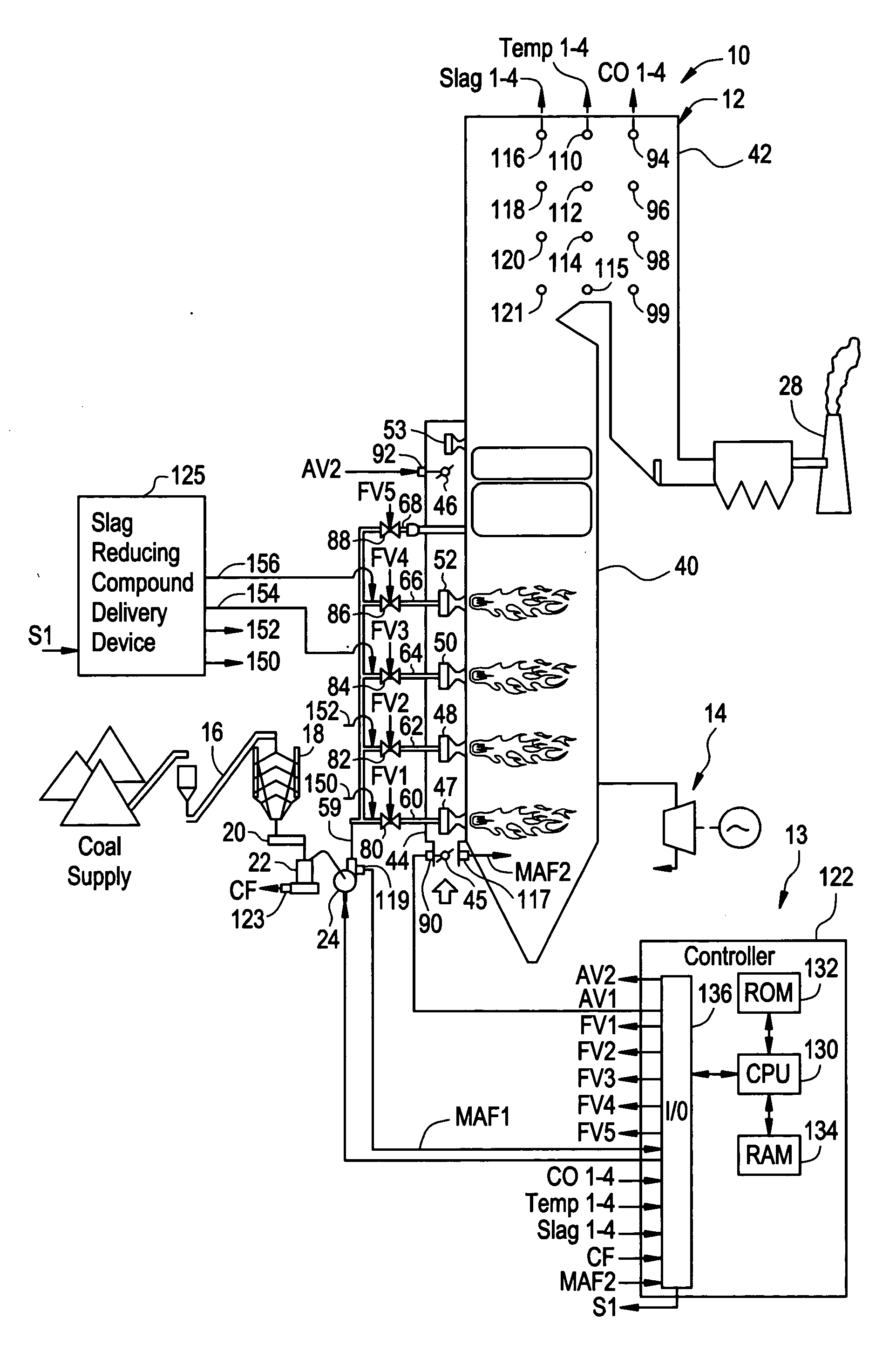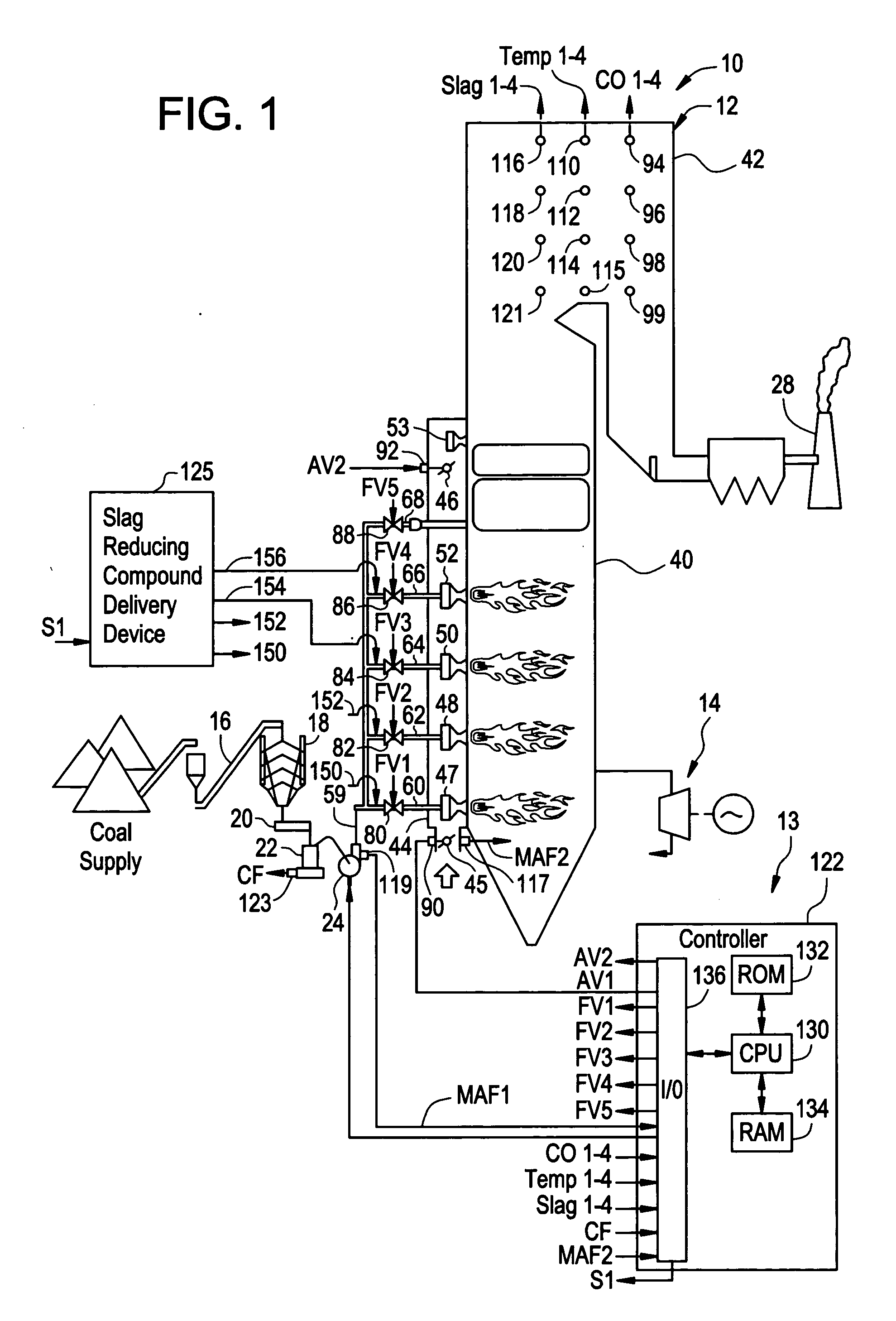System and method for decreasing a rate of slag formation at predetermined locations in a boiler system
a technology of predetermined locations and slag formation, which is applied in the direction of solid fuel combustion, combustion control, lighting and heating apparatus, etc., can solve the problems of affecting the maintenance cycle of the boiler system, slag formation can dislodge from the walls, and damage equipment within the boiler system, so as to reduce the rate of slag formation, and increase the a/f ratio
- Summary
- Abstract
- Description
- Claims
- Application Information
AI Technical Summary
Benefits of technology
Problems solved by technology
Method used
Image
Examples
Embodiment Construction
[0020] Referring to FIG. 1, a power generation system 10 for generating electrical power is illustrated. The power generation system 10 includes a boiler system 12, a control system 13, a turbine generator 14, a conveyor 16, a silo 18, a coal feeder 20, a coal pulverizer 22, an air source 24, and a smokestack 28.
[0021] The boiler system 12 is provided to burn an air-coal mixture to heat water to generate steam therefrom. The steam is utilized to drive the turbine generator 14, which generates electricity. It should be noted that in an alternative embodiment, the boiler system 12 could utilize other types of fuels, instead of coal, to heat water to generate steam therefrom. For example, the boiler system 12 could utilize any conventional type of hydrocarbon fuel such as gasoline, diesel fuel, oil, natural gas, propane, or the like. The boiler system 12 includes a furnace 40 coupled to a back path portion 42, an air intake manifold 44, burners 47, 48, 50, 52, an air port 53, and cond...
PUM
 Login to View More
Login to View More Abstract
Description
Claims
Application Information
 Login to View More
Login to View More - R&D
- Intellectual Property
- Life Sciences
- Materials
- Tech Scout
- Unparalleled Data Quality
- Higher Quality Content
- 60% Fewer Hallucinations
Browse by: Latest US Patents, China's latest patents, Technical Efficacy Thesaurus, Application Domain, Technology Topic, Popular Technical Reports.
© 2025 PatSnap. All rights reserved.Legal|Privacy policy|Modern Slavery Act Transparency Statement|Sitemap|About US| Contact US: help@patsnap.com



